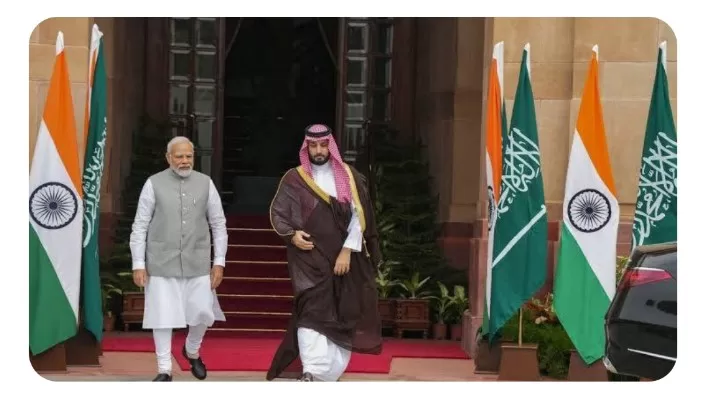In a significant shift from their conventional buyer-seller relationship centered around oil, India and Saudi Arabia have embarked on a path to establish an energy transition partnership. This ambitious endeavor involves the creation of an undersea interconnection between their electricity grids, bolstering their renewable energy capacities, and venturing into the realm of green hydrogen production
The Memorandum of Understanding (MoU), sealed by India’s Minister of Renewable Energy, R K Singh, and his Saudi counterpart, Abdulaziz bin Salman Al-Saud, carries transformative potential. It could potentially elevate India from a net purchaser of Saudi oil and cooking gas (LPG) to an energy-exporting nation, specializing in green energy and hydrogen exports. Notably, Saudi Arabia ranks as India’s third-largest source of oil and primary supplier of LPG.
The government, in an official statement, affirmed that this MoU aligns with India’s commitment to energy transition and global efforts to combat climate change.
The undersea power grid interconnect stands as an exceptionally ambitious and technologically intricate proposition, with far-reaching implications. Upon realization, it will serve as the first offshore link in Prime Minister Narendra Modi’s vision of a ‘One Sun, One World, One Grid’ concept, aimed at creating a global network primarily fueled by green energy. Presently, there are 485 undersea power cables in operation worldwide, with the Viking link between the United Kingdom and Denmark being the longest at 764 kilometers.
The objectives of cooperation outlined in the statement encompass encouraging bilateral investments in identified sectors by fostering collaboration with specialized energy companies from both nations, opening the door to private sector participation. Notable collaborations have already surfaced, with companies like Avaada Energy and the Essar Group joining hands with Al Jomaih Energy and Water and Desert Technologies, respectively, to develop renewable energy projects in Saudi Arabia, including a massive $4.5 billion green steel plant by Essar.
Furthermore, the MoU emphasizes cooperation in the domain of petroleum reserves, potentially leading to Saudi investments in expanding India’s strategic oil and gas storage capacities. Currently, India maintains strategic oil reserves totaling just over 5 million tonnes, distributed across three locations, along with commercial LPG storage.
This development marks a significant step in India’s journey towards enhancing its connectivity in the global energy landscape, with an outlook for potential power exports to neighboring countries and beyond, in alignment with the ‘One Sun, One World, One Grid’ vision.
In addition to the expansion of renewable energy capacity, India holds substantial potential to export green hydrogen to Saudi Arabia, contributing to the proposed economic corridor to Europe through the United Arab Emirates. India is ambitiously targeting a green hydrogen capacity of 5 million tonnes by 2030, aiming to establish itself as a global hub for this futuristic energy source.
The MoU also encompasses cooperation in various other areas, including the circular economy, technologies to mitigate climate change effects such as carbon capture, utilization, and storage, and advancements in digital transformation, innovation, cybersecurity, and artificial intelligence in the energy sector.
This agreement underscores the commitment of both India and Saudi Arabia to forge a stronger energy partnership, aligning their interests with global sustainability goals.







